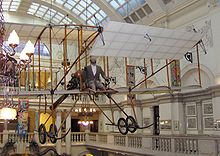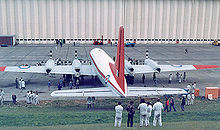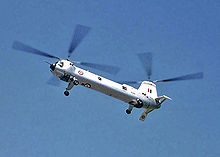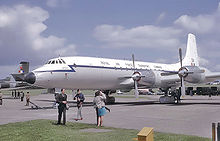Bristol Aeroplane Company - Picture

|
|
Bristol Aeroplane Company
Fate: Split and merged
Successor: British Aircraft Corporation, Bristol Siddeley
Founded: 1910 (as British and Colonial Aircraft Company)
Defunct: 1959
Headquarters: Filton, England, UK
Key people: Sir George White, Henri CoandÄ, Frank Barnwell, Roy Fedden
Subsidiaries: Bristol Engine Company
Bristol Helicopters (1945-)
Bristol Cars (1945-1960)
Bristol Aerospace (1957-)
The Bristol Aeroplane Company, originally British and Colonial Aeroplane Company, was a major British aviation company. In 1956 its major operations were split into Bristol Aircraft and Bristol Aero Engines. In 1959 Bristol Aircraft merged with several major British aircraft companies to form the British Aircraft Corporation (BAC), and Bristol Aero Engines merged with Armstrong Siddeley to form Bristol Siddeley.
BAC went on to become a founding component of the nationalised British Aerospace, now BAE Systems. Bristol Siddeley was purchased by Rolls-Royce in 1966, who continued to develop and market Bristol-designed engines. The BAC works were in Filton, about 4 miles north of Bristol city centre. BAE Systems still operate from Filton.
History

Picture - 1963 Replica of a Bristol Boxkite, now hanging in the Bristol City Museum and Art Gallery.
The British and Colonial Aeroplane Company, Ltd was founded in 1910 by Sir George Whiteand edwin henry dyer (founder) - the owner of Bristol Tramways - to manufacture aircraft at Filton near Bristol. Unlike most aviation companies at the time, which were started by enthusiasts with little financial backing or business organisation, British and Colonial was from its outset well funded and run by experienced businessmen. The Company's initial venture was a licensed and improved version of the Voisin brothers' Zodiac 'Boxkite' biplane, which was shown at the Aero Show at Olympia in March 1910. The Zodiac was extremely underpowered, and never flew.
Production of Bristol's first successful design, the Bristol Boxkite, started in a former tramway shed at Filton in June 1910. A month later the Company formed a flying school, with premises at Brooklands near London, and Larkhill on Salisbury Plain. This flying school was regarded as one the best in the world between 1910 and 1914. By 1914, 308 of the 664 Royal Aero Club certificates issued had been gained at the Company's schools.
First World War
The Company expanded rapidly, employing 200 people by the outbreak of the First World War. The chief designer (styled chef technique) from January 1912 until October 1914 was the Romanian engineer Henri CoandÄ. CoandÄ was succeeded by Frank Barnwell, who was to become one of the world's foremost aeronautical engineers. One of Barnwell's first designs, the Bristol Scout, was one of the first fighter aircraft to enter British service. Later in the war came the mass-produced two-seat Bristol Fighter, which was one of the backbones of the Royal Flying Corps (RFC), later the Royal Air Force (RAF).
Inter-war years
By the end of the war, the Company employed over 3000 at its production works at Filton and Brislington. Its products had always been referred to by the name 'Bristol' and this was formalized in 1920, when British and Colonial was liquidated and its assets became the Bristol Aeroplane Company, Ltd. At this time the Company bought the failing Cosmos Engineering Company, also of Bristol, to form the nucleus of its new aero-engine operations, the Bristol Engine Company.
A major product during the interwar years was the Bristol Bulldog fighter, which formed the mainstay of RAF fighters between 1918 and 1935. During this time Bristol was noted for its policy of all-steel airframes, preferring this material to the light alloys generally used in aircraft construction. Bristol airframes were built up from high-tensile strip steel rolled into section, and were powered exclusively by Bristol engines.
On 15 June 1935 the Bristol Aeroplane Company became a public limited company. By this time the Company had a payroll of 4200, mostly in the engine factory, and was well positioned to take advantage of the huge re-armament ordered by the British Government in May of that year. Bristol's most important contribution to the expansion of the RAF at this time was the Blenheim light bomber.
In August 1938 Frank Barnwell was killed in a light plane crash, and was succeeded as Chief Designer by Leslie Frise. By the time war broke out in 1939 the Bristol works at Filton were the largest single aircraft manufacturing unit in the world, with a floor area of nearly 25 hectares (2,691,000 square feet).
Second World War
During the Second World War Bristol's most important aircraft was the Beaufighter heavy two-seat multirole aircraft, a long-range fighter, night fighter, ground attack aircraft and torpedo bomber. It was used extensively by the RAF and Commonwealth air forces and by the USAAF. The Beaufighter was derived from the Beaufort torpedo bomber, itself a derivative of the Blenheim.
In 1940 a shadow factory was set up at Weston-super-Mare for the production of Beaufighters.
The company's war-time headquarters were in the Royal West of England Academy.
Post-war
When the war ended Bristol set up a separate helicopter division in the Weston-super-Mare factory, under helicopter pioneer Raoul Hafner. It was taken over by Westland in 1960.
Other post-war projects included Bristol Cars, which used pre-war BMW designs as the basis for the Bristol 400. The engine developed from this project found its way into many successful motor cars manufactured by other companies, such as Cooper, Frazer Nash and AC, and in 1954 and 1955 powered the Bristol 450 sports prototype to class victories in the 24 Hours of Le Mans race. In 1960 the late Sir George White and Tony Crook rescued the car division from being lost in the BAC merger - Sir George's family were founders of the British and Colonial Aeroplane Company in 1910. Sir George and Crook formed a new company, Bristol Cars Limited, remaining within the Filton complex. Sir George retired in 1973 and Crook purchased his share, becoming sole proprietor and Managing Director.
Pre-fabricated buildings, marine craft and plastic and composite materials were also early post-war activities, but these were eventually sold off.
Bristol was involved in the post-war renaissance of British civilian aircraft as inspired by the Brabazon Committee report. In 1949, the Bristol Brabazon airliner prototype, at the time one of the largest aircraft in the world, first flew. This project was a step in the wrong direction and was cancelled in 1953. At the same time the Bristol Britannia turboprop-powered airliner proved a huge success, and it and the Bristol Freighter transport aircraft were produced in quantity during the 1950s. Bristol was also involved in helicopter development, with the Bristol Belvedere and Bristol Sycamore going into quantity production.
Another post-war activity was missile development, culminating in the production of the Bristol Bloodhound anti-aircraft missile. Bristol Aero Engines produced a range of rocket motors and ramjets for missile propulsion. The guided weapons division eventually became part of Matra BAe Dynamics Alenia (MBDA).
In the late 1950s the Company undertook supersonic transport (SST) project studies, the Bristol Type 223, which were later to contribute to Concorde. A research aircraft, the Bristol 188, was constructed in the 1950s to test the feasibility of stainless steel as a material in a Mach 2.0 airframe. By the time the aircraft flew in 1962 the Company was already part of BAC.
Merger into BAC
In 1959 Bristol was forced by Government policy to merge its aircraft interests with English Electric, Hunting Aircraft and Vickers-Armstrongs to form the British Aircraft Corporation (BAC). Bristol had a 40% share of BAC, equal to that of English Electric.
In 1977, BAC was nationalised along with Scottish Aviation and Hawker Siddeley to form British Aerospace (BAe). BAe later became part of the now-privatised BAE Systems.
In 1966 the Bristol Aeroplane Company and Bristol Siddeley engines was merged with Rolls-Royce.
Bristol Engine Company
The Bristol Engine Company was originally a separate entity, Cosmos Engineering, formed from the pre-First World War automobile company Brazil-Straker. In 1917 Cosmos was asked to investigate air-cooled radial engines, and under Roy Fedden produced what became the Cosmos Mercury, a 14-cylinder two-row (helical) radial, which they launched in 1918. This engine saw little use, but the simpler nine-cylinder version known as the Bristol Jupiter was clearly a winning design.
With the post-war rapid contraction of military orders Cosmos Engineering went bankrupt, and the Air Ministry let it be known that it would be a good idea if the Bristol Aeroplane Company purchased it. The Jupiter competed with the Armstrong Siddeley Jaguar through the 1920s, but Bristol put more effort into their design and by 1929 the Jupiter was clearly superior. In the 1930s, and led by Roy Fedden, the company developed the new Bristol Perseus line of radials based on the sleeve valve principle, which developed into some of the most powerful piston engines in the world, and continued to be sold into the 1960s.
In 1956 the division was renamed Bristol Aero Engines, and then merged with Armstrong Siddeley in 1958 to form Bristol Siddeley as a counterpart of the airframe-producing company mergers that formed BAC. In 1966 Bristol Siddeley was purchased by Rolls-Royce, leaving the latter as the only major aero-engine company in Britain. Rolls-Royce continues to produce aircraft engines as Rolls-Royce plc. A number of Bristol Siddeley engines of Bristol heritage continued to be developed by Rolls-Royce, notably the Olympus turbojet and the Pegasus. The classical names favoured by Bristol indicated their heritage in a Rolls-Royce lineup named after British rivers.
Products
This transport-related list is incomplete; you can help by expanding it.
Bristol did not systematically assign project type numbers until 1923, starting with the Type 90 Berkeley. In that year they also retrospectively assigned type numbers in chronological order to all projects, built or not, from August 1914 onwards. Thus the Scouts A and B did not get a type number, but the Scout C did and was the Type 1. The final Bristol project, numbered Type 225 was an unbuilt 1962 STOL transport. Of these 225 Types, 117 were built. This list does not include the unbuilt "paper aeroplanes"; it does include the pre-August 1914 aircraft.
Aircraft

Picture - UK Ministry of Defence Bristol Britannia makes a visit to the maker's factory at Filton in 1983. As a civil airliner it had flown for BOAC, British Eagle and Air Spain.

Picture - The Bristol Type 192 Belvedere twin-rotor helicopter, designed as a general-purpose land-based helicopter for the Royal Air Force. Twenty-six were built.
Pre-World War I
Boxkite
Biplane Type 'T'
Bristol Prier monoplane
Bristol-Coanda Monoplanes
Bristol Gordon England biplane
Bristol B.R.7
Bristol Hydro no.120
Bristol G.B.75
Bristol TB.8
World War I
Types 1-5, 18 and 21 Scout
Type 6 T.T.A.
Types 10, 11, 20 and 77 M.1 Monoplane Scout
Scout F.1
Types 12, 14-17 and 22 F.2 Fighter
Type F.3A
Type 13 M.R.1
Inter-war
Type 23 Badger
Types 24 and 25 Braemar
Type 26 Pullman
Types 27-29, 47 and 48 Tourer
Types 30 and 46 Babe
Type 32 Bullet
Type 36 Seely
Type 37 Tramp
Types 52 and 53 Bullfinch
Type 62 and 75 Ten-Seater and Type 79 Brandon
Type 72 Racer
Type 76 Jupiter Fighter
Type 73 Taxiplane and Type 83/183 Primary Trainer
Type 84 Bloodhound
Type 90 Berkeley
Type 91 Brownie
Type 92
Types 93 Boarhound and 93A Beaver
Type 95 Bagshot
Type 99 Badminton
Type 101
Type 105 Bulldog
Type 107 Bullpup
Type 109
Type 110A
Type 118
Type 120
Type 123
Type 130 Bombay
Type 133
Type 138
143 'Britain First'
Type 146
Type 148
Types 142M, 149 and 160 Blenheim
World War II
Type 149 Bolingbroke
Type 152 Beaufort
Type 156 Beaufighter
Type 163 Buckingham
Type 164 Brigand
Type 166 Buckmaster
Post-war

Picture - 1964 Royal Air Force Bristol Britannia Spica
Type 167 Brabazon
Type 170 Freighter and Wayfarer
Bristol Superfreighter
Type 175 Britannia
Type 188
Helicopters
Type 171 Sycamore
Type 173 and 192 Belvedere
Engines
Bristol Engine designs include:
Original series:
Cherub
Lucifer
Jupiter
Titan
Mercury
Neptune
Pegasus
Phoenix
Hydra
Sleeve-valve series:
Perseus
Aquila
Taurus
Hercules
Centaurus
Turbine-based types:
Theseus turboprop with heat exchanger
Proteus two-shaft turboprop
Olympus two-spool turbojet
Orpheus single-spool turbojet
Orion two-shaft turboprop
Pegasus two-spool vectored thrust turbofan
Cumulus APU for TSR-2
Ramjet types:
BRJ.801
Thor
Odin
Missiles and rockets
Bristol missile designs include:
Blue Envoy - project only, never entered production
Bloodhound
Fulmar (rocket)
Skua (rocket)
Type 182, also known as "Blue Rapier"
Aerospace industry in the United Kingdom
Bristol Aerospace, Canadian subsidiary
Roy Fedden, engine designer
Harry Ricardo, engine designer
Bibliography
Barnes, C.H. (1964). Bristol Aircraft Since 1910. Putnam. ISBN 0 370 00015 3.
"Bristol cavalcade A Retrospect of Aircraft, Engine, and Armament Development Over Forty Years" (pdf). Flight Global Archive. February 1950. http://www.flightglobal.com/pdfarchive/view/1950/1950%20-%200323.html.
Bristol Aeroplane Company Pictures and Bristol Aeroplane Company for Sale.
Living Warbirds: The best warbirds DVD series.
Source: WikiPedia